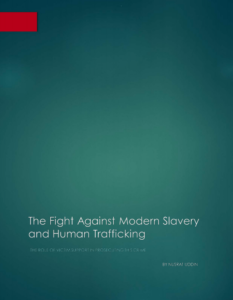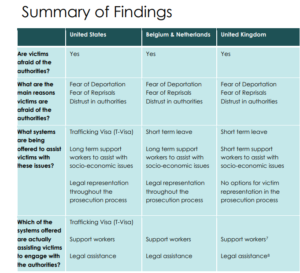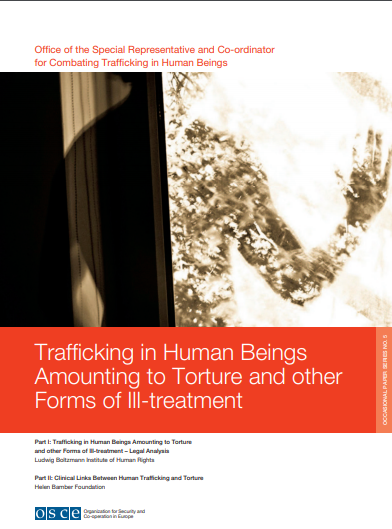Other Reports
Terrorism and Human Trafficking
A significant and recent report out by the United Nations Security Council, reflecting concerns raised in 2018 at CCARHT’s 5 Ts conference in Cambridge, where members of YAZDA brought their testimony of the atrocities and the links with Terrorism, Trauma, Finance and Trafficking: their testimony made clear yet another bitter addition to the catalogue of human trafficking violations to our common humanity, to our symposium members.
The report remarks
‘Targeted killings of Yazidi date back to the period of the Ottoman Empire and began to increase in frequency in 2007 when bus hijackings and vehicle bombings conducted by suspected Al-Qaida militants left hundreds dead or injured.
However, at no point in history have the acts of violence against them have been more heinous and systematic than during the persecution campaign initiated by ISIL on 3 August 2014.
On that day, ISIL invaded hundreds of towns and villages, forcing most of the population (c. 400,000 people) to flee to neighbouring Kurdistan and other areas of Iraq. An estimated 40,000-50,000 people fled to the top of Mount Sinjar. Thousands of Yazidi were also killed or taken as captives to Mosul and the Syrian Arab Republic. These acts of violence represented a clear attempt to persecute, subjugate and destroy an entire community, notably because:
1. The Yazidi were targeted by ISIL, regardless of their age or sex: both executions and kidnappings were systematic and targeted children and adults indiscriminately. These findings have been confirmed by the discovery of several mass graves64 containing the remains of hundreds of Yazidi men, women, and children in the Sinjar area (which has been taken back from ISIL).65
2. The Yazidi were forced to convert and to abandon all their traditions and customs (i.e., to repudiate their cultural identity).
3. ISIL fighters destroyed or looted Yazidi temples and shrines.
4. Families in captivity were separated and forcibly transferred to temporary holding sites in ISIL-controlled territory.
5. Rape, sexual slavery and other forms of enslavement were used to psychologically and physically debilitate women and girls and to ensure that they could never again lead a normal life.
6. ISIL fighters regularly traded and purchased unmarried women and girls in open slave markets. They also held online slave auctions, using an encrypted application which circulated photographs of the captives, as well as details of their age, marital status, current location and price.
7. Boys were forcibly indoctrinated, recruited, given new names, trained in military camps, and used as human shields. Only those who had not reached puberty were allowed to remain with their mothers.
The Yazidi were not the only minority to be targeted by ISIL. Shia Turkmen, Shia Shabak and Christian communities were also considered to be kuffar (i.e., “infidel unbelievers”) and therefore persecuted. Initially, Christians (viewed by ISIL as “People of the Book”) were ostensibly given the option of paying jizya (a form of protection tax), as an alternative to death, for the “privilege” of living under the rule of the so-called caliphate. Such claims, however, were apparently mere propaganda, since all Christians were also forced to convert. All these facts demonstrate that ISIL acted freely and implemented a thorough and systematic plan to commit the crime of genocide, in addition to war crimes and crimes against humanity.
On 3 June 2018, the Department of Yazidi Affairs in the Ministry of Awqaf and Religious Affairs of the Kurdistan Regional Government evaluated the toll of atrocities perpetrated by ISIL in accordance with the following statistics:
• Number of people displaced following ISIL invasion: 360,000
• Number of orphans created by the invasion: 2,745
• Number of abductees: 6,417 (3,548 females and 2,869 males)
• Number of those who emigrated: 100,000
• Numbers of survivors: 3,300 (1,150 women, 337 men, 946 female children and 867 male children).
• Number of those remaining in the grip of ISIL: 3,117 (1,452 females and 1,665 males).
41. The last figure is particularly worrying. More than 3,000 individuals remain missing’.
This is a worth while and enlightening comparative study between services for Victims of Trafficking in the US, Belgium, the Netherlands and the UK, and the correlations to be discovered in the variance of support in relation to the number of prosecutions undertaken through the associated country’s Criminal Justice System (CJS).
The results are promising – the difference in the length of guaranteed support for VOTs, the quality of support including their ability to work whilst in their country of former exploitation, and the level of co-operation VOTs bring to the CJS to enable the launching of successful prosecutions manifest some significant interconnection. This is a timely report which should be on every politician’s and CSO’s desk who are advocating for enhanced protection and support for VOTs . Clarity has been brought in this study around a critical dimension of the counter trafficking process, which is currently undermining successful prosecutions of Human Trafficking crimes within the UK. It has also profound implications for countries not investigated in this report by extension, of the integral relationship between support and prosecutions, demonstrated through a careful piece of research funded by the Winston Church Memorial Fund.
‘For many victims, part of the recovery process following their escape is to seek justice and redress through the criminal justice system (CJS). The Code of Practice for Victims of Crime (Victims’ Code)4 outlines clearly and precisely the level of service that victims of crime are entitled to receive. However VOTs have particular needs, which are not addressed by the Victims’ Code or the MSA. Indeed, a recent report from the Anti-Trafficking Monitoring (ATMG) group, which conducted UK based research with government representatives, support agencies, lawyers, NGOs and law enforcement agencies, found that there were two main factors impacting authorities’ ability to mount a prosecution. The first was inadequate support for victims and the second was lack of resources. Increased funding was promptly identified for law enforcement, however increased funding for victim support has been less forthcoming. In October 2017 reforms of the victim support system were announced by the government however lack of funding remains a key issue in improving support.’ Nusrat Uddin from the Executive Summary 2018.

Europol’s most recent report on Child Trafficking and Exploitation across the European Union
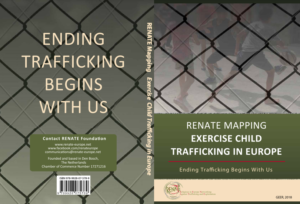
To be read alongside our most recent upcoming RENATE report prepared by CCARHT on the challenge of Unaccompanied Children in the migratory flows across Europe. CT RENATE Mapping Exercise Child Trafficking in Europe Pdf Published 2019
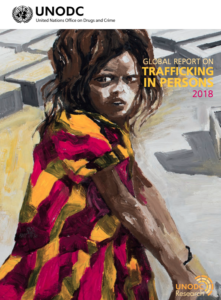
UNODC 2018 – attention on segmented and reliable data collection to drive policy and enforcement.
Download the UNODC biannual report – one of the international ‘go to’ reports on the state of reporting, prosecution, and protection efforts recorded globally. The United Nations Office on Drugs and Crime, is the curator and guardian of the Palermo Protocol 2000, United Nations Convention Against Transnational Organised Crime – of which the Palermo Protocol elaborating the crimes against the person of Human Trafficking and the separate crime against the State, of Human Smuggling are outlined.
Health Care issues The Kings College PROTECT report 2017
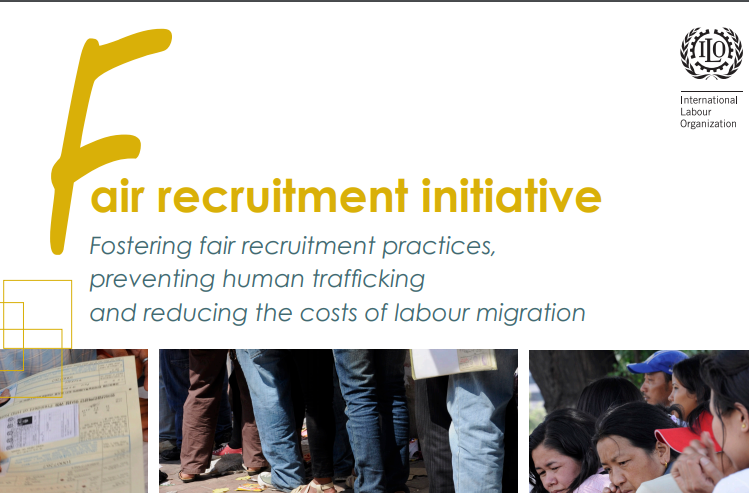
There are currently 240 million people in migration across national borders, and 740 million in migration within State borders – that is one billion persons on the move, away from their natal homes, out of a global population of 7.7 billion persons.
People have always been in migration since the records of Homo Sapiens began. People on the search for improved opportunities, ‘ a better life’ as well as fleeing from natural disasters, and man-made violence and the destructive forces of war.
This booklet originally published in 2015, offers a route into understanding how people in migration can be abused through corrupted recruitment practices, and appeals for stronger attention by global businesses and states, to foster accountable recruitment and employment regimes, preventing human trafficking and reducing the costs in human rights dereliction and socio-economic drains of poorly managed labour migration.
Trafficking in Human Beings Amounting to Torture and other Forms of Ill- Treatment Occasional Paper Number 5 2013 OSCE Organisation for Security and Economic Co-operation in Europe. Helen Bamber Foundation Part 1
A report commissioned and published in 2013 by the OSCE under the direction of Maria Grazia Giammarinaro OSCE Special Representative and Co-ordinator
for Combating Trafficking in Human Beings who says this about the outcome in her foreword.
Most cases presented in this paper are cases of sexual and labour exploitation including domestic servitude, and show the common patterns of interpersonal violence amounting to torture. “e victim is detained or kept under the factualpower or control of the torturer; the latter uses this unequal
power relation in order to achieve a certain purpose, be it obtaining a confession or keeping a person in exploitation.It is important to underline, however, that having control over a person does not necessarily mean that this person is
locked up.
For example, repetitive abuse gives the perpetrator regular control and makes the victim feel helpless. “is research shows indeed very well the extent to which
trafficking in human beings is associated with violence and human suffering, such that we can compare it and even consider it to be a form of torture. “is association clearly indicates that THB is not only a violation of human rights, is not only a crime, it is also something whose existence is unbearable, against which it is necessary to mobilise moral resources, as in the case of historical slavery. It also suggests, in my view, new criteria to enhance political will against both trafficking and torture, and new means to provide victims with additional protection such as reparation which includes not only compensation but also rehabilitation and
satisfaction.
Maria Grazia Giammarinaro
Special Rapporteur on Human Trafficking
OSCE


